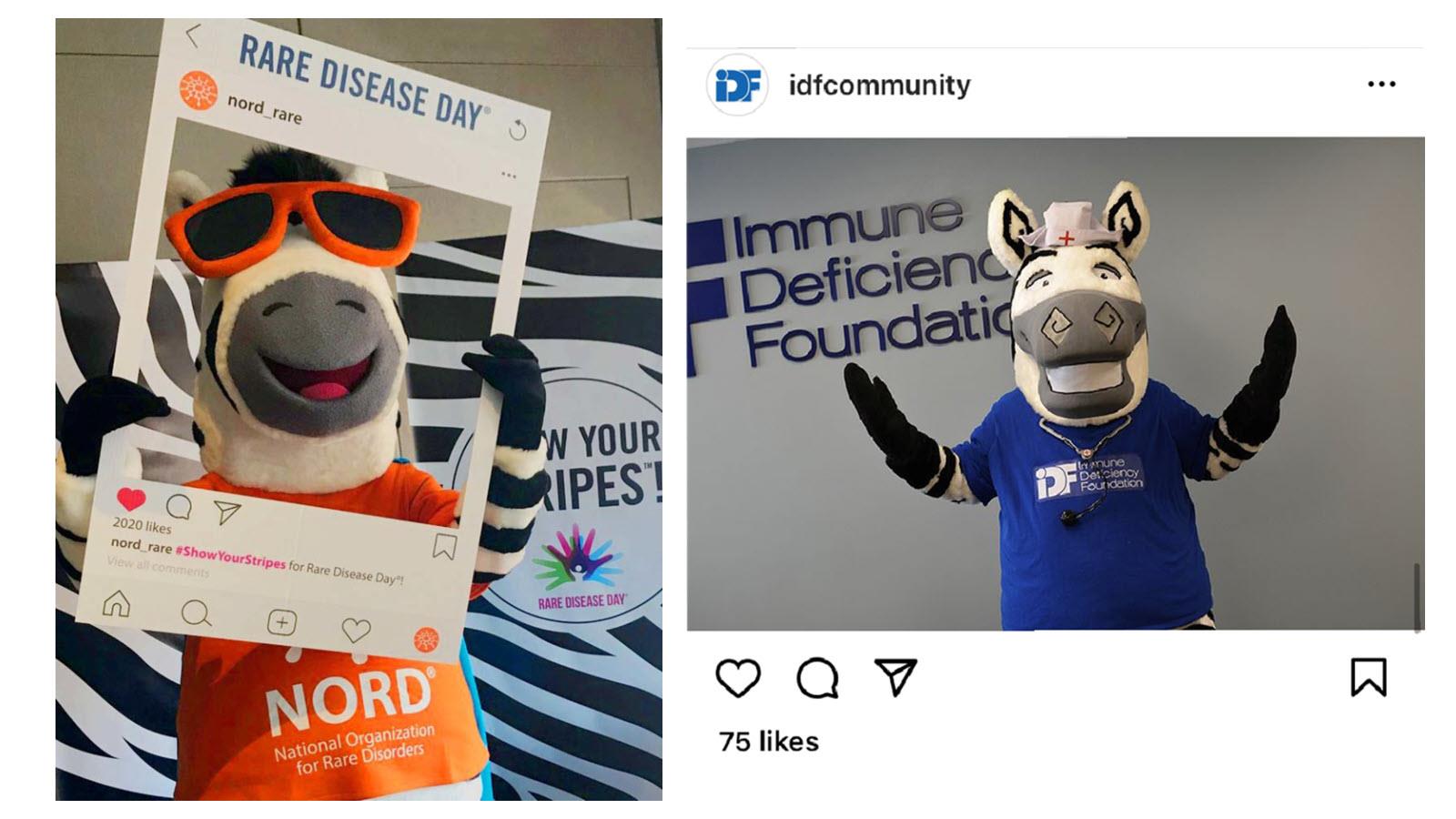It’s February, which comes with hearts and Valentine’s Day, but also expect some zebras.
The black and white striped animal, native to the African continent, has come to represent the world’s community of patients who have rare diseases. And this month that community marks Rare Disease Day on February 28.

Visit the website for the National Organization for Rare Disorders (NORD) and you’ll find a zebra wearing sunglasses. The Immune Deficiency Foundation, which represents people who live with immune system problems, also claims the zebra and even has its own walk-around mascot, TZ, who attends events. TZ dressed up as a health care worker for Halloween, the IDF said in an Instagram post featuring the zebra in a nurse’s cap.

When California artist Heather Gauthier posted her whimsical illustrations of zebras in social media (see above), a rare disease patient commented that the image reminded her “I can still live with beauty and hope.” Patient advocacy groups say hope is found in being seen and acknowledged, which has not come easy to the rare disease community.
The zebra icon originated with a University of Maryland physician who was making the opposite point. Stressing that the simplest explanation is usually correct, Dr. Theodore Woodward instructed medical students: “When you hear hoof beats, think horses, not zebras." In other words, suspect common illnesses and maladies, not uncommon ones.
But more recently rare disease advocates turned that on its head, asking doctors to remember that sometimes the cause is a rare condition. Advocates continue to work around the world for increased access to specialists, research dollars and the treatments that exist only for a small fraction of the 7,000 identified rare conditions.
Zebras are out there, a Canadian family practice physician wrote in a journal article. He encouraged family doctors to be curious and willing to learn so that rare disease patients receive the care they need, which includes treatment for run-of-the mill problems and illnesses, in addition to care for their rare condition. Rare patients are often relieved to find doctors who are willing to take the time, wrote Dr. James A. Dickinson.
“They are very grateful for an inquisitive approach and receiving knowledgeable attention rather than being dismissed as having problems beyond the interest of a mere general practitioner,” Dickinson wrote. “Treating zebras engages the brain, as you work out how to distinguish the unusual features of the disease from the other medical problems that life brings these people.”



